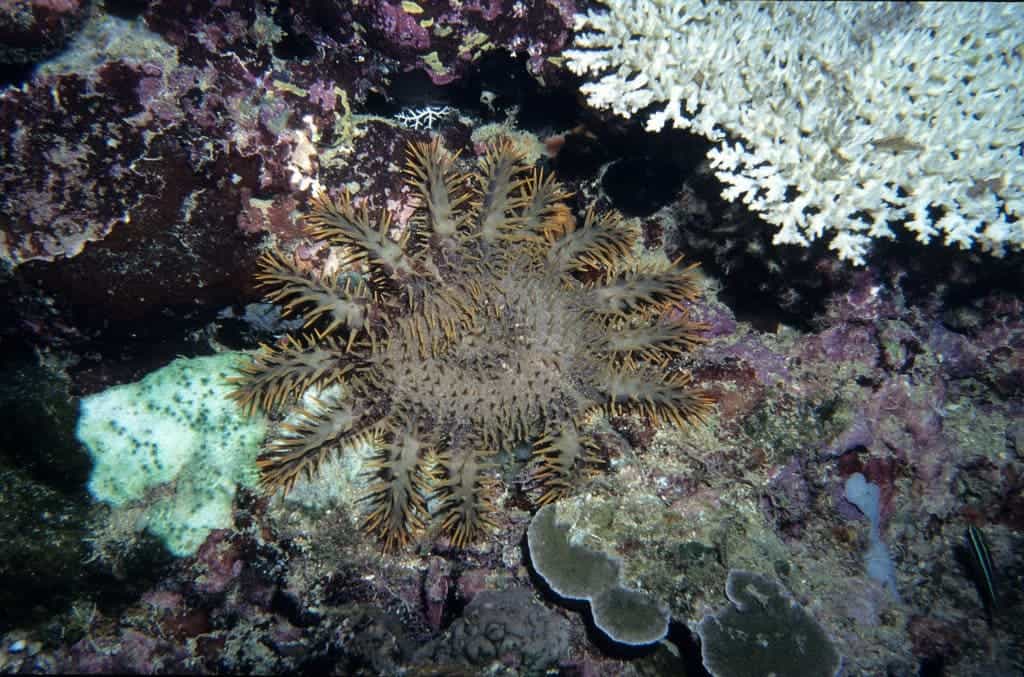Crown-of-thorns sea stars (Acanthaster planci), named after their resemblance to Christ’s crucifixion crown, are killing lots of corals. They reproduce extremely quickly and feed on the already vulnerable coral reefs. An international research team based in Australia and Japan has discovered that the starfish crowd together in massive numbers due to pheromones that they release. They have sequenced the starfish’s genome and now know exactly which chemical makes them congregate. This knowledge could help them eradicate large numbers of the destructive starfish and help save the reefs.

Coral killer
Crown-of-thorns starfish cause immense coral cover and biodiversity loss. They are even worse for the reefs than coral bleaching and disease combined. They also make the reefs more vulnerable to events such as storms. Unfortunately, the starfish are found all over the Indo-Pacific region, near many of the world’s most diverse coral reefs. Millions of dollars have already been spent trying to get rid of these harmful creatures, from diver collection to injections and robots. Nothing has been successful so far, and the reefs are a ticking time bomb, with bleaching and overfishing also damaging them. Finding a solution to deal with their starfish is critical for the reefs’ survival.
“For an already struggling Great Barrier Reef, and indeed any reefs across the Indo-Pacific region, these starfish pose an enormous threat due to the ability of a single female to produce up to 120 million offspring in one spawning season,” said Professor Bernard Degnan from the University of Queensland. “They feast on the coral and leave it bleached white and vulnerable to destruction in heavy storms.”

Tapping into pheromones
Like other marine invertebrates, crown-of-thorns sea stars rely on chemosensory signals to gain information about predators, prey, and mates. Large masses of them come together to mate. It turns out that particular pheromones are responsible for bringing these sea stars together. The researchers focussed on chemicals released from aggregating starfish. They found some chemicals that are released in masses and are sensed by the starfish. Receptors for the chemical are contained in the nerves, spine, and body wall. Indeed, when they tested the chemicals in the lab, the starfish became active and moved towards the pheromone.
“Now we’ve found the genes the starfish use to communicate, we can begin fabricating environmentally safe baits that trick them into gathering in one place, making it easier to remove reproductively-primed animals,” said Professor Bernard Degnan.
These chemical attractants can work as biocontrol agents. When all the starfish are grouped together they could be easier to remove efficiently. This finding is a good sign for the future of Indo-Pacific Reefs. A similar approach could be used to control other invasive, detrimental animals such as sea snail and other pests.
Journal reference: Michael R. Hall, et al., The crown-of-thorns starfish genome as a guide for biocontrol of this coral reef pest. Nature, 2017; DOI: 10.1038/nature22033






